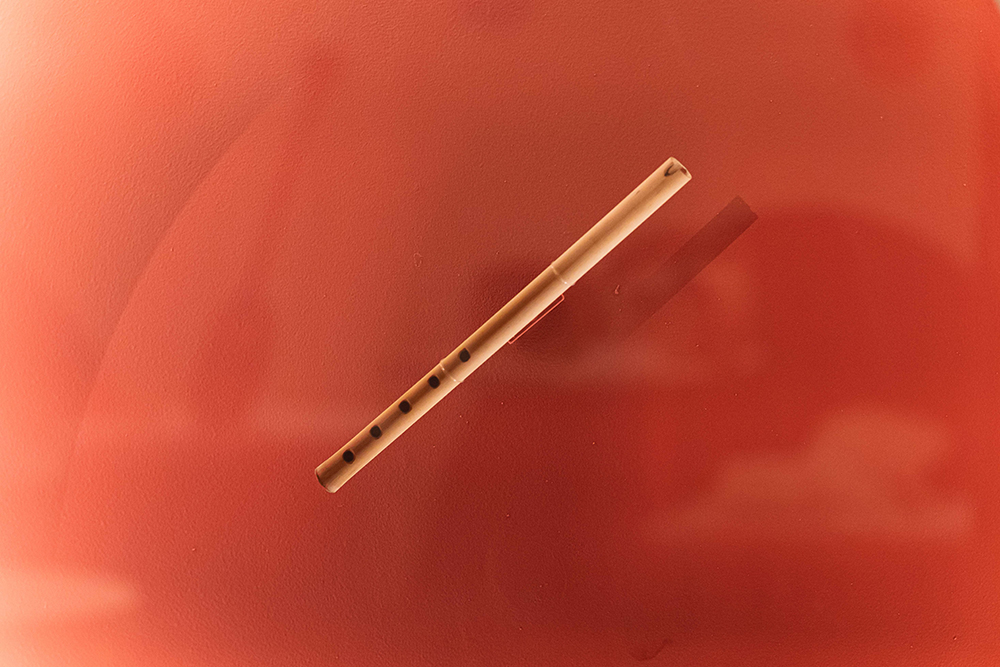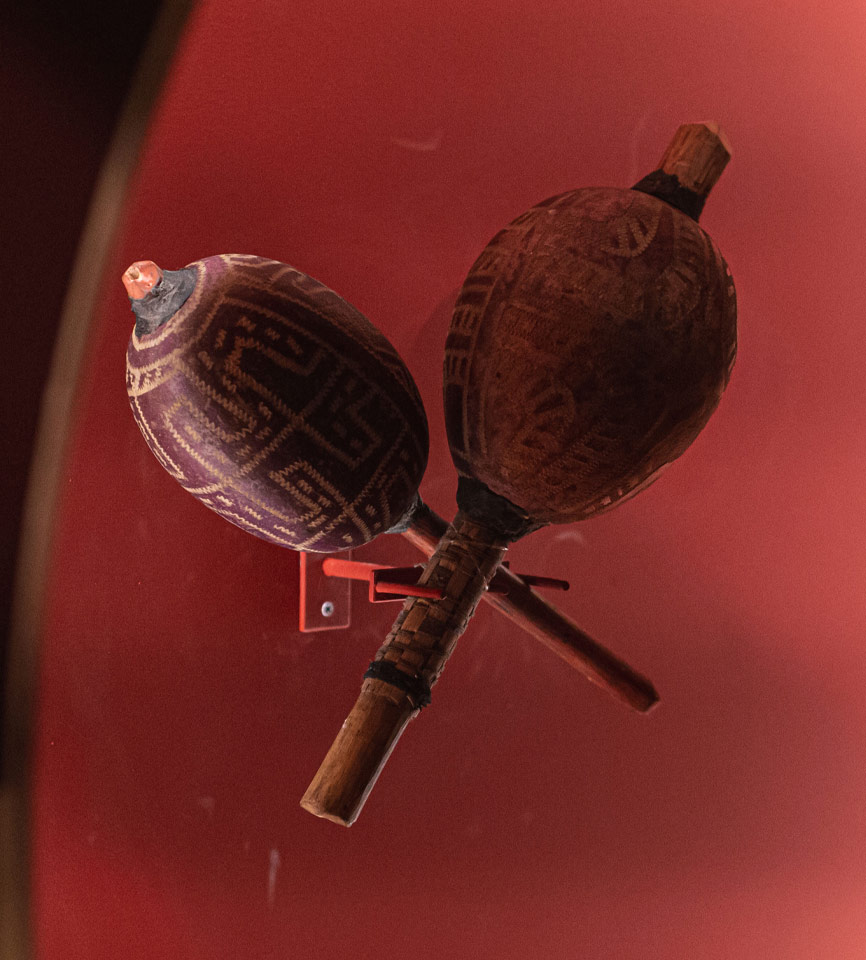You are in:
Millennial Amazon
How to browse

Click on the icons to move around the room or to access points of interest. Alternatively, use the arrow keys to turn, go forward, and go backward.


Click and drag the image to explore the scene in 360°.
Alternatively, use the arrow keys to turn left and right.


Use the scroll wheel to zoom in or out.
Alternatively, use the plus and minus keys.

Virtual Tour / Indigenous musical instruments
Indigenous musical instruments
All instruments
("Tãpo") drum, "Showiretsi" flute, Maracas

Ashaninka
("Tãpo") drum
The Ashaninka people come from the Peruvian Incas and live nowadays in several communities scattered along the Amônia River, located at the western end of Acre, near Brazil’s border with Peru. They use several instruments; the most outstanding are “tãpo” drums and a type of flute “sõkari”, which accompany their songs, dances, and rituals.
The exhibited drum was made by Antonio Pyãnko and Winko Pyãnko and acquired for the exhibition through the Ashaninka Agroextractive Cooperative of the Amônia River – Ayopa.

Ashaninka
"Showiretsi" flute
The flute, like the drum, is one of the prominent instruments of the Ashaninka people. There are two types of flutes: “sõkari” and “showiretsi”. The former is generally played by the elders and is highly symbolic for its people. The second, exhibited in this room, is usually played during the “piyarentsi”, a festive ritual of social interaction among family groups.
The exhibited flute was made by women from the Ashaninka Association of the Amônia River – Apiwtxa and acquired for the exhibition through the Ashaninka Agroextractive Cooperative of the Amônia River – Ayopa.

Karajá
Maracas
The maraca is one of the most widespread instruments in indigenous cultures. It symbolizes a rhythmic object and has a spiritual, ceremonial, and religious influence on the original peoples. It is also present in several Amazonian cultural manifestations, such as “carimbó”.
The pair of maracas was produced by Harioma Karajá. This ethnic group inhabits the banks of the Araguaia River in the states of Goiás, Tocantins, and Mato Grosso, and acquired through the C.A.N.O.A Indigenous Art entity.

